How to WordPress Password Protect Page in 3 Easy Steps
A WordPress password protect page is something you need when you want to limit public access to your WordPress content.
There are many reasons why you might want to password protect a WordPress page or post, such as:
- Sharing confidential data with a specific group of people.
- Creating a membership site or a course platform.
- Testing your website before launching it to the public.
- Protecting your intellectual property or creative work, etc.
In today’s blog post, we will show you how to password protect a page in WordPress using the Password Protected plugin in three easy steps.
So, without any further ado, let’s get started!
Benefits of Password Protecting a WordPress Page or Post
Before we get into how to password protect a WordPress page/post, let’s briefly discuss why it’s a good idea:
- Better Security: You can prevent hackers, bots, or malicious users from accessing your website content without your permission.
- Improved User Experience: Provide authorized users with a personalized and exclusive experience. This will also help you avoid spam comments and unwanted traffic on your website.
- Increased Content Value: By password protecting your WordPress page, you create a sense of scarcity and urgency for your website content, which allows you to charge a fee or require an email address to access your website content.
As you can see, password protecting WordPress pages or posts help you achieve your website goals and objectives. Whether you want to protect your privacy, increase your conversions, or grow your audience, securing your WordPress page or post is a useful strategy.
How to Password Protect a WordPress Page [3 Simple Steps]
There are many ways to password protect a page in WordPress, but the easiest one is to use the Password Protected plugin.
With the Password Protected plugin, you can not only secure WordPress pages but also entire WordPress sites, categories, custom post types, WooCommerce-specific products, and much more.
To password protect a WordPress page using the Password Protected Plugin, just follow three simple steps given below:
Step#1: Install and Configure Password Protected Plugin
To install the Password Protected Plugin on your WordPress site:
- Log in to your WordPress dashboard and navigate to Plugins → Add New Plugin.
- Search for “Password Protected” in the search box and look for “Password Protected – Ultimate Plugin to Password Protect….”
- Click on the “Install Now” button next to the plugin name.
- After that, click on the “Activate” button to activate the plugin.
Upon activation, you’ll see the plugin’s settings screen. Click on the “Get Pro” tab and then the “Get Password Protected Pro” button to opt in for the Password Protected Pro version.
NOTE: To password protect a WordPress page, you need to have the Password Protected Pro version.
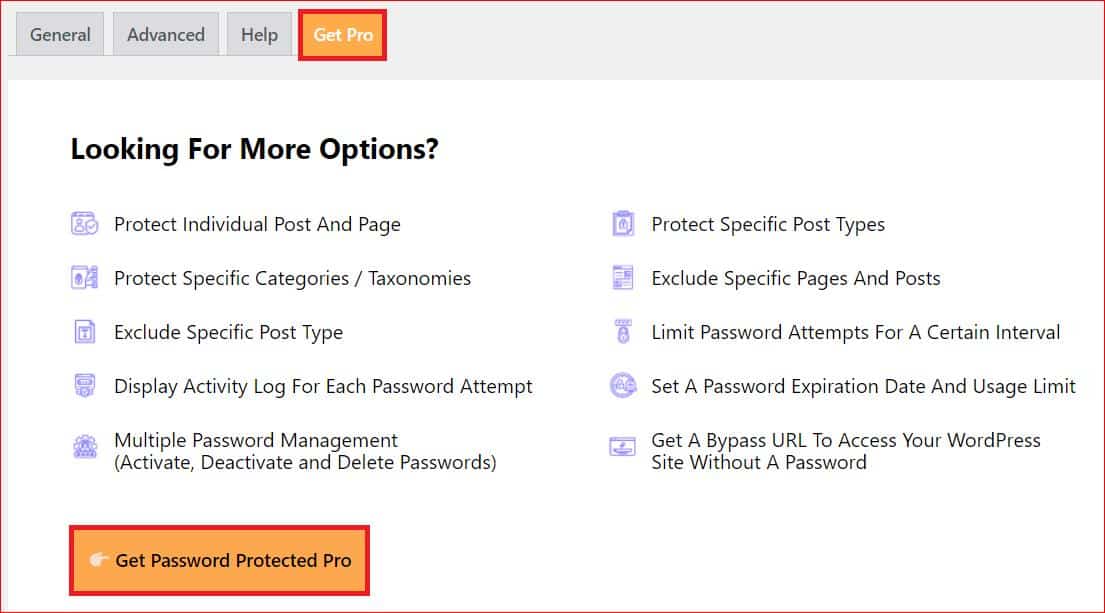
- On the pricing page, choose your desired plan and submit your order.
- Within a few minutes, you will receive an email with a link to the Password Protected Pro zip file and your exclusive license key, as shown in the screenshot below.

- Now, go back to the WordPress dashboard, and go to Plugins → Add New Plugin → Upload Plugin.
- Click on the “Choose File” button to upload the “Password-Protected-pro.zip” file and then click on “Install Now.”

- After the installation, click on “Activate Plugin.”
- Enter the license key that you’ve received in the welcome email and hit the “Activate License” button.
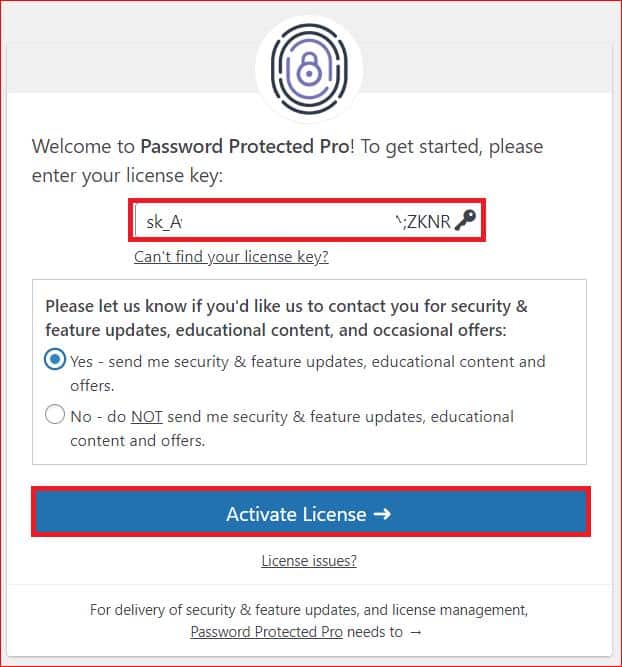
Upon successfully activating the plugin, you need to configure it to password protect a WordPress page.
Step#2: Configure Settings in Post Type Protection Tab
In this step, you need to activate Password protection for individual WordPress pages.
- Go to your WordPress dashboard and click “Password Protected” from the right-hand menu.
- Inside the plugin’s settings, click on the “Post Type Protection” tab, then check mark the individual page protection option and hit the “Save Changes” button, as shown in the image below.
NOTE: If you want to Password Protect all pages, check the box under the “Global” column.
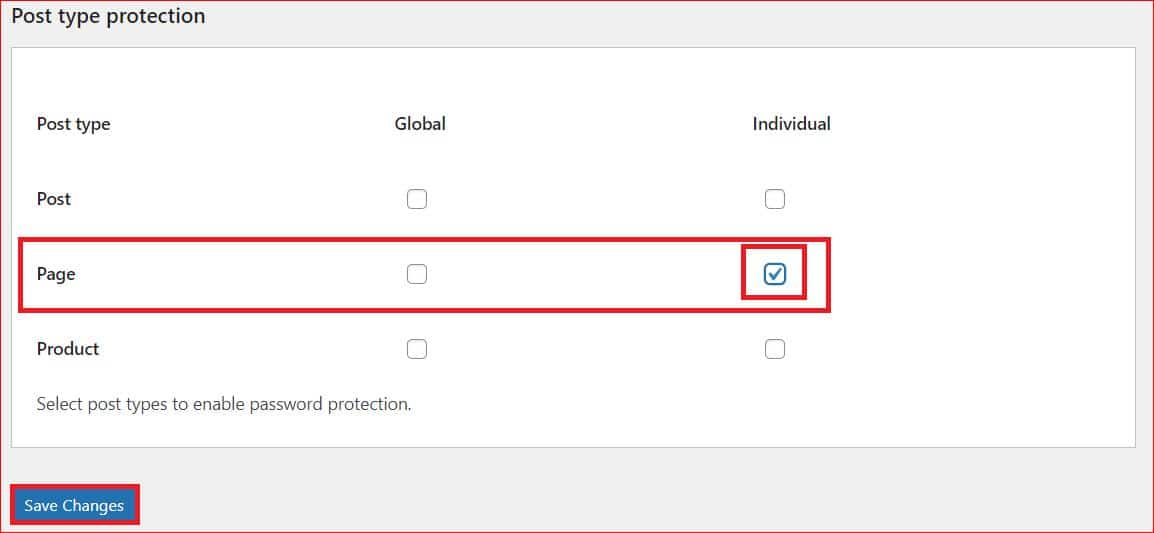
Step#3: Set Password for Your Desired WordPress Page
Now, you can set a password for any WordPress page you like. To do so:
- Go back to your WordPress dashboard and navigate to Pages → All Pages.
- Hover your mouse cursor over the WordPress page you want to password protect and click on “Edit.”
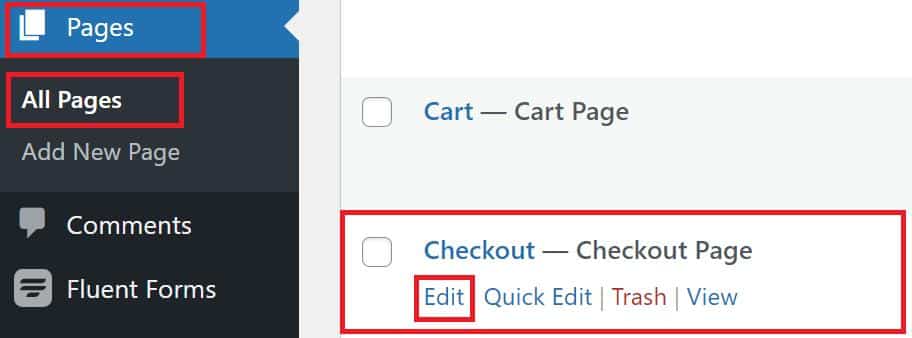
- Now, scroll down, checkmark the “Enable Password Protection” option, and hit “Save Changes.”

- Upon clicking the Save Changes button, the form will populate with the following fields so you can configure the password for your page.
- Password: You can set any password you want, but an 8-digit long password is recommended.
- Usage Limit: It represents how many times a user can use the same password. After the usage limit is exceeded, the password will no longer be valid, but the page will remain secure.
- Expiry: Choose when the password will expire, after which the page won’t be password protected anymore.
- Status: For now, keep the status “Activate,” but you can also select “Deactivate” or “Expired” later.
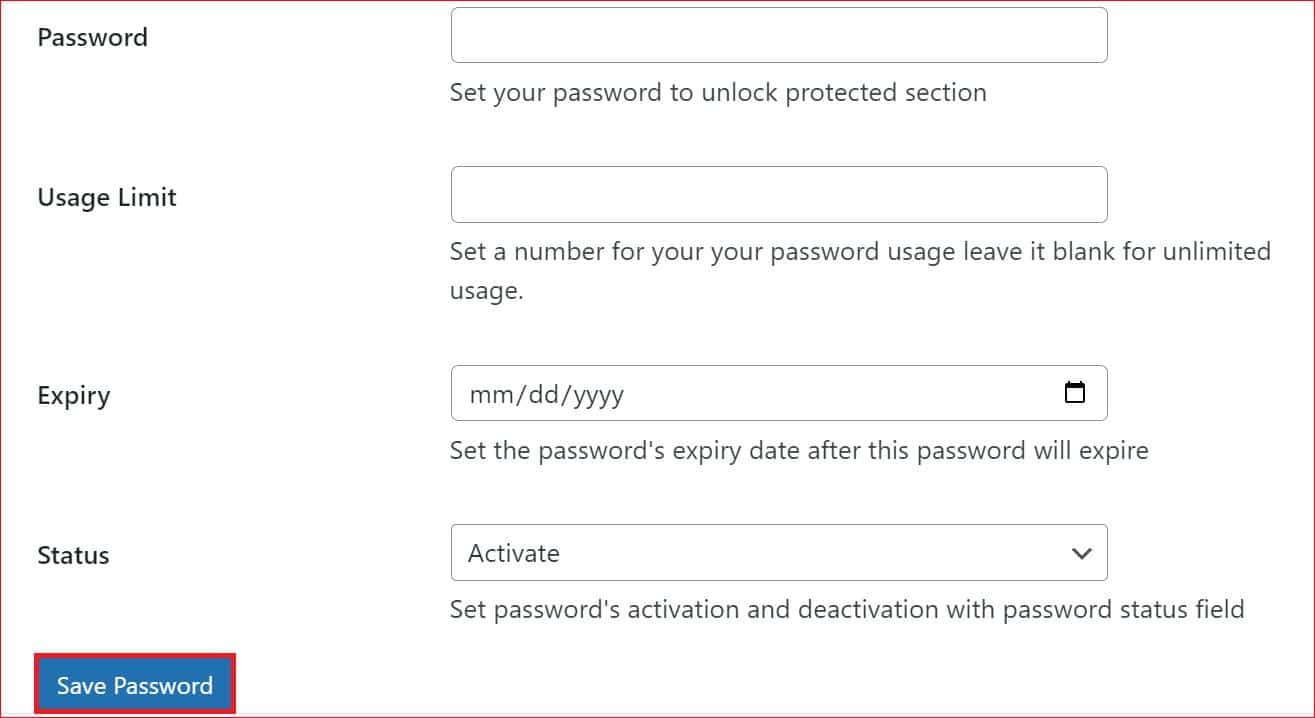
- After providing all the password configurations, select the “Save Changes” button to apply the password protection.
Whenever someone visits the password protected page on your site, they will see the below password protected screen.
NOTE: You can change the look and feel of your password protected screen to match your brand by using our login designer plugin.
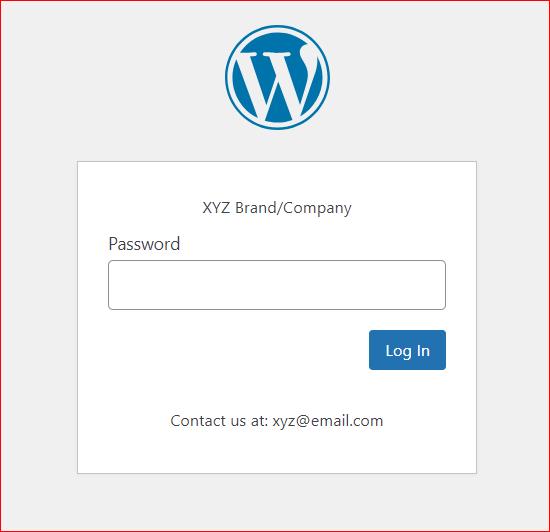
Congratulations! You’ve now successfully Password Protected a WordPress page.
IMPORTANT: To protect your password protected screen from a WordPress brute force attack use the limit login attempts feature of password protected plugin. It allows you to restrict login attempts, which automatically blocks a user after certain failed password attempts.
Closing Remarks on Password Protect a Page in WordPress
As you might want to offer exclusive content, a membership program, or limit public access simply for maintenance purposes, a WordPress password protected page is essential for content protection.
As we have already shown you in the tutorial above, how to WordPress password protect page in three easy steps using the Password Protected Plugin. The best thing is that by using the Password Protected plugin, you can also protect the entire WordPress site, categories, custom post type, WooCommerce listings, and much more.
Lastly, if you have any questions or need help, feel free to contact us via our support channel.
Thank you for reading, and stay protected!
Frequently Asked Questions
Q #1: How do I restrict users on a page in WordPress?
To restrict users for a WordPress page, you need to install the Password Protected plugin, then go to the Post Type Protection tab and select the individual page protection option. After that, simply from the edit panel of any page, enable password protection, and specify any password you want.
Q #2: Can you password protect a WordPress page?
Yes, you can password protect a WordPress page using the Password Protected plugin. Additionally, you can protect your entire WordPress site, WooCommerce listings, categories/taxonomies, and much more.
Q #3: How does a WordPress password protected page work?
A WordPress password protected page works by hiding the page’s content and replacing it with a password form. When users try to access the page, they need to enter the correct password to view the content. To implement password protection, you need the Password Protected plugin.

